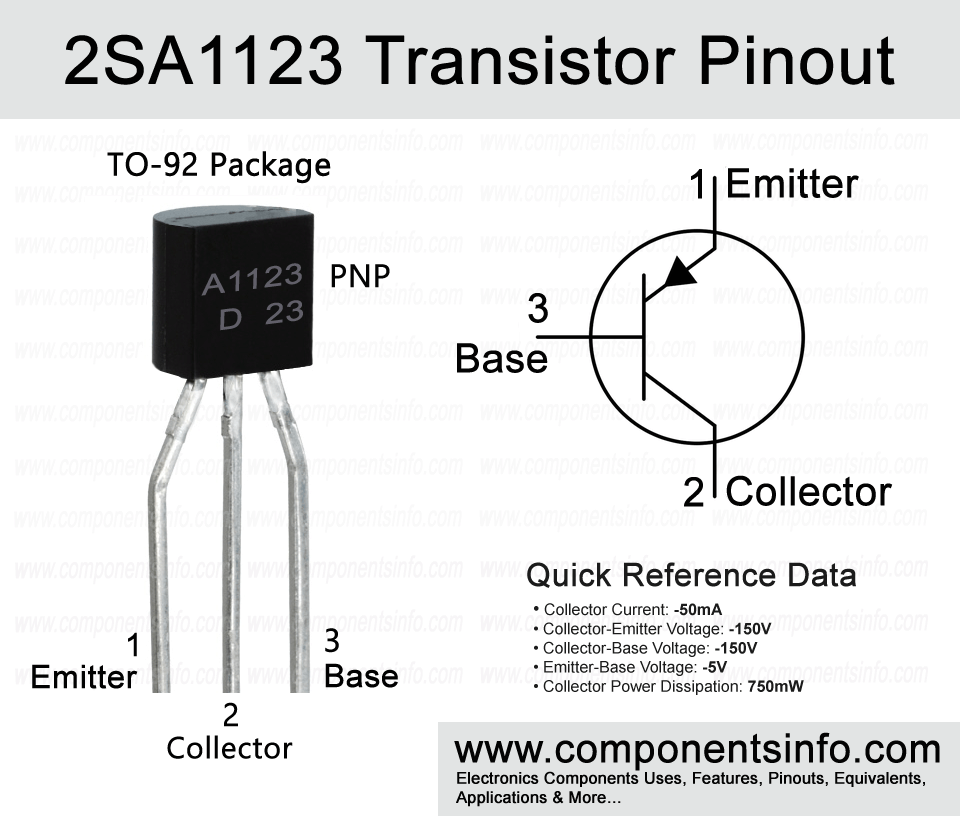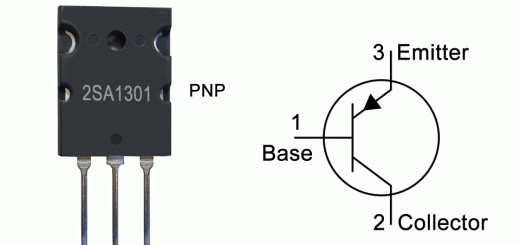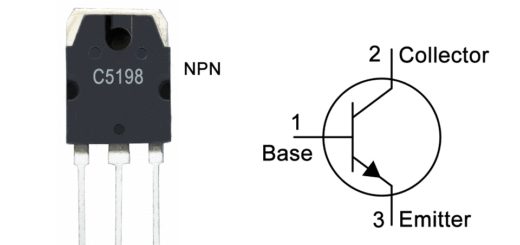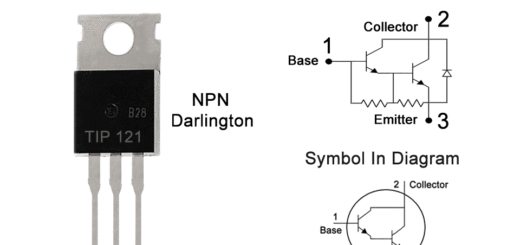2SA1123 Transistor Pinout, Features, Applications, Equivalents and Other Useful Details
A1123 or 2SA1123 is a PNP transistor available in TO-92 package. This post explains 2SA1123 transistor pinout, features, applications, equivalents and other useful details.
Absolute Maximum Ratings:
- Package Type: TO-92
- Transistor Type: PNP
- Max Collector Current(IC): -50mA
- Max Collector-Emitter Voltage (VCE): -150V
- Max Collector-Base Voltage (VCB): -150V
- Max Emitter-Base Voltage (VEBO): -5V
- Collector Power Dissipation (Pc): 750mW
- Transition Frequency (fT): 200 MHz
- DC Current Gain (hFE): 130 to 450 (Three different variations, See text.)
- Max Storage & Operating temperature Should Be: -55 to +150 Centigrade
NPN Complementary:
NPN complimentary of 2SA1123 is 2SC2631
Replacement and Equivalent:
2SB1363, 2SB1244, 2SA1625, 2SA1544, 2SA1145
2SA1123 Transistor Explained / Description:
2SA1123 is a TO-92 package PNP transistor designed to be used in audio signal amplification and where the requirements of high breakdown voltage. The transistor has many good features such as high collector-emitter voltage, 5pf collector output capacitance, availability of complimentary transistor, transition frequency of 200MHz, max DC current gain of 450 and collector power dissipation of 750mW.
Looking at the absolute maximum ratings of the transistor the collector-emitter voltage is -150V, collector-base voltage -150V, emitter-base voltage -5V, collector current of -50mA, peak collector current is -100mA, collector power dissipation is 750mW, junction temperature is 150 ̊C and storage temperature is -55 ̊C to +150 ̊C.
The transistor is available in three different variations according to its DC current gain each variation can be determined with the alphabet written after the part number. If that alphabet is “R” then its DC current gain or hFE will be 130 to 220, if it is “S” then its hFE will be 185 to 330 and if that alphabet is “T” then its hFE will be 260 to 450.
How to Use Transistor:
2SA1123 is a BJT transistor so the using procedure will be same as you use other BJT transistors. Here we will explain only the base procedure to use the transistor so you can understand the concept.
To use the transistor as a switch connect its emitter with the positive rail of the circuit, apply signals from which you want to control the output to its base pin through a suitable current limiting resistor. Usually the resistor value of 1K to 10K is used. The load will be connected between the collector pin and negative rail of the circuit, so the negative wire of the load will be connected with the negative rail and the positive wire will be connected with the collector pin of the transistor. Moreover, if you are using a load that requires current limiting then you must connect that load through a current limiting resistor else the load will be damaged.
Now to use the transistor as an amplifier connect its emitter with the positive rail of the circuit, apply audio signals that you want to amplify to its base pin through a suitable capacitor, usually an electrolytic capacitor between .47uf to 10uf is used. Connect the speaker between the collector and the negative rail of the circuit through the same value electrolytic capacitor that you have used at the input. This is a guide to build a simple audio amplifier circuit so to make it better you have to use some other discrete components.
Applications:
Audio Amplifier Circuits
Switching Circuits
Audio Amplifier Stages
Tx and Rx Circuits
Audio Preamplifier Circuits
Darlington Pairs
Signal Amplification
Safe Operating Guidelines:
Follow these guidelines to safely operate the transistor:
- Do to operate it to its absolute maximum ratings and always at least 20% below from these ratings.
- Maximum collector current is -50mA, so according to the above guidelines after reducing 20% it will be -40mA.
- The maximum collector-emitter voltage is -150V and after reducing it 20% it will be -120V.
- Always check pin layout before use.
- The operating and junction temperature should be between -55°C to 150°C.
Datasheet:
To download the datasheet just copy and paste the below link in your browser.
https://www.alldatasheet.com/datasheet-pdf/view/12694/PANASONIC/2SA1123.html



